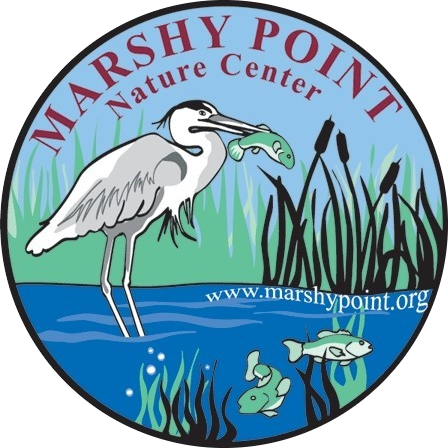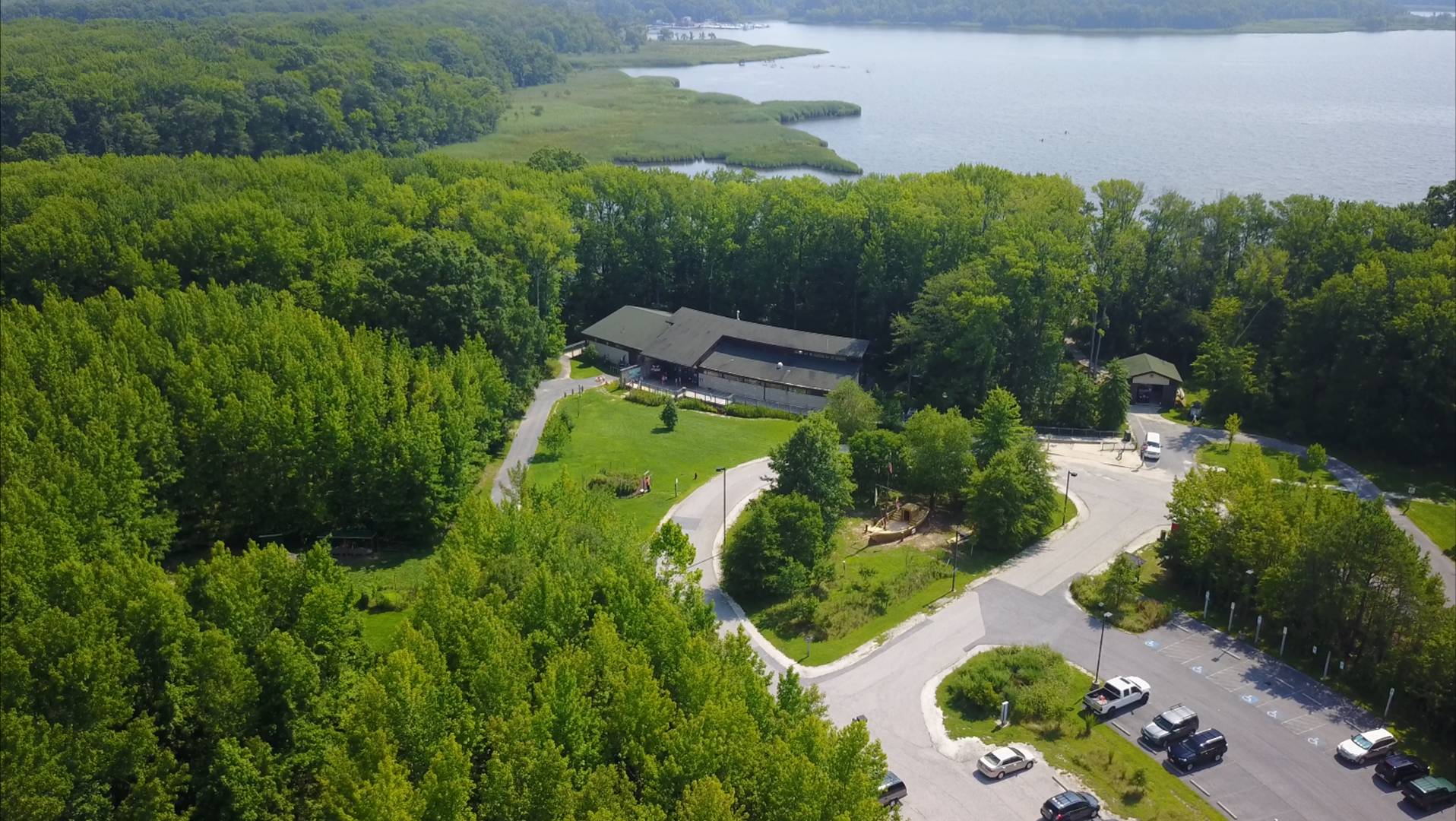Marshy Point is home to a domestic turkey that wanders the area around the nature center with our chickens, but several dozen wild turkeys also roam our woods.
Turkeys are native to the Americas and are one of the few animals domesticated by Native Americans in Central America and the Southern United States. Although wild and domestic turkeys are recognized as being the same species—Meleagris gallopavo—the differences between them are pronounced.
Wild turkeys are one of the largest birds in North America—weighing up to 25 pounds—but are quick runners, strong flyers that roost in trees, and are known to be wary and difficult to hunt.
Domestic birds are quite the opposite, having been bred for hundreds of years for meat production. They are flightless, short-legged, and not too bright. Although our American Bronze Turkey might resemble her wild cousins, domestic birds have white-tipped tail feathers while wild birds have brown-tipped tail feathers.
Male and female turkeys can be easily told apart. Male birds of both wild and domestic varieties are the only ones that display their tail feathers and have:
- a noticeable beard—a cluster of long, hair-like feathers from the center of the chest
- a long, fleshy snood that extends from the beak
- a very pronounced wattle
(Both male and female domestic birds may waddle when they walk, but the wattle is the wrinkled skin under the bird’s beak. It is most obvious in male turkeys when they are displaying or strutting.)
All turkeys make vocalizations, but gobbling is only done by the males and is associated with displaying. A gobbling male tom can be heard up to a mile away—warning other males out of his territory and trying to attract females or hens.
The name turkey probably comes from when the birds were imported to parts of Europe through the country of Turkey. The name stuck even though turkeys are only native to the Americas.
Benjamin Franklin may not have proposed that the turkey be the national bird of the United States, but he did suggest it was a “a true original Native of America” unlike the bald eagle which he called “a Bird of bad moral Character.” That, however, is a topic for another edition of “Naturalist’s Notes”.
Until then, stop by Marshy Point to visit our turkey and maybe observe her wild cousins moving quickly through the woods. If you don’t see these woodsy, wary, wild birds, there is a good chance it is because they saw you first.

